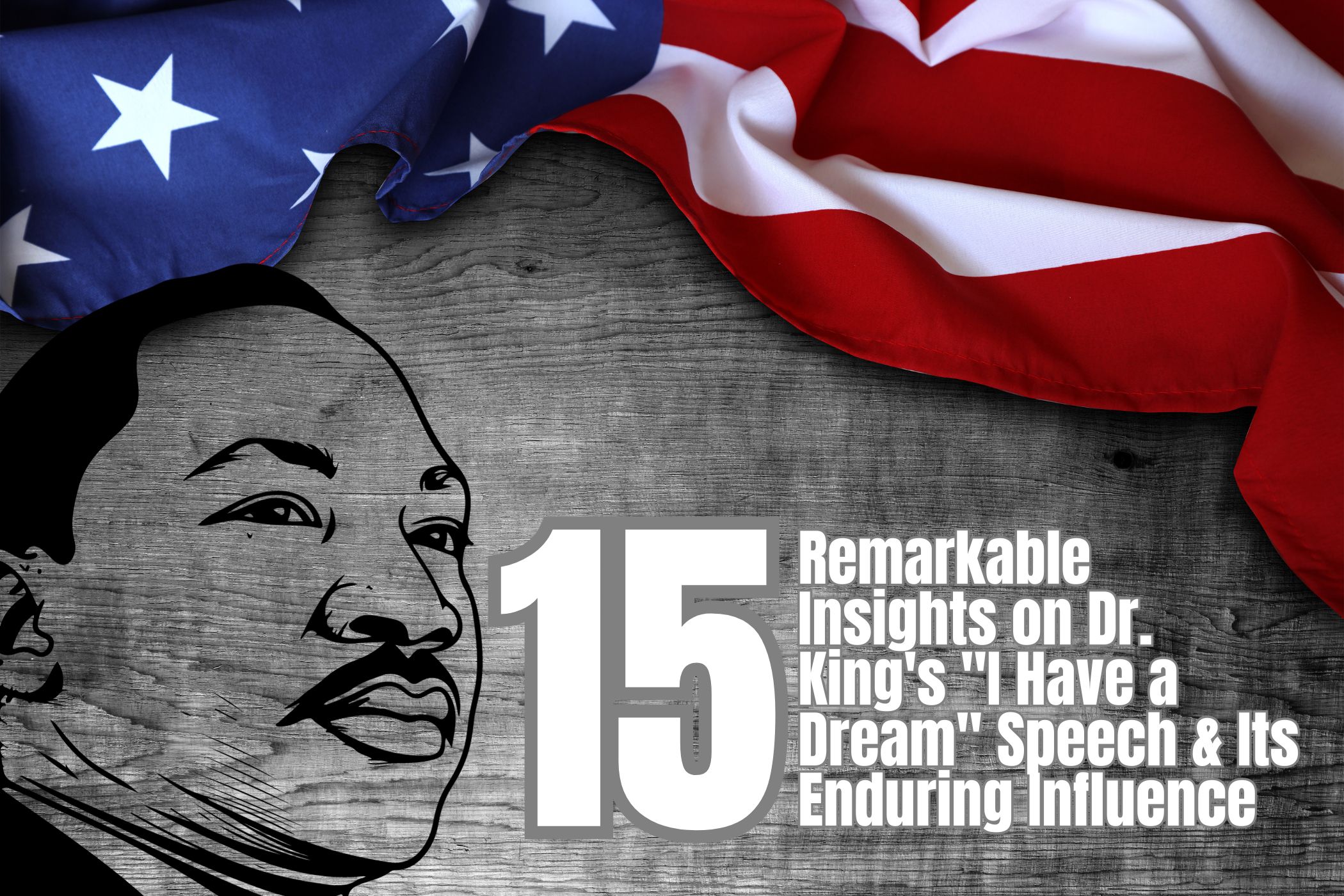Martin Luther King Jr.’s “I Have a Dream” speech is not just a historical artifact; it’s a living testament to the power of language to ignite hope and drive transformation.
Join us as we discuss the 15 insights into this iconic speech, exploring its spontaneous brilliance, global impact, legislative significance, and lasting influence on societal aspirations. Each facet of the speech is a thread in the tapestry of social change, demonstrating the enduring power of words to spark hope and catalyze progress.
Spontaneous Genius
The famous “I have a dream” segment was not pre-written but spontaneously spoken, inspired by Mahalia Jackson’s urging, “Tell them about the dream, Martin!” This impromptu brilliance became its most memorable aspect.
Opinion Transformation
Surveys conducted before and after the speech indicated a notable rise in nationwide support for the Civil Rights Movement, helping to lay the groundwork for consequential legislative changes.
Worldwide Echo
The speech, translated into numerous languages, echoed globally, fueling movements for justice and equality far beyond American borders.
Legislative Milestones
The speech is acknowledged as a key driver for the enactment of the Civil Rights Act of 1964 and the Voting Rights Act of 1965, pivotal legislations that combated racial discrimination and empowered Black American voters.
Cultural Phenomenon
Phrases from the speech like “dream,” “mountaintop,” and “free at last” became ingrained in American culture, influencing various forms of art, music, and literature.
Redefining American Aspirations
King’s depiction of a society where one’s character, rather than race, determines one’s destiny expanded the scope of the American Dream, advocating for inclusivity and fairness.
Youthful Empowerment
The speech sparked a flame of hope and motivated activism among younger generations, including both Black and white individuals, who increasingly joined the Civil Rights Movement.
Symbol of Perseverance
The speech continues to serve as a potent emblem of hope for social justice efforts, symbolizing the enduring fight for equality and the possibility of meaningful change.
Exemplifying Nonviolent Change
King’s steadfast adherence to nonviolent protest, as showcased in the speech, became a blueprint for peaceful demonstrations and social reform movements globally.
Personalizing the Cause
By sharing his personal hopes and experiences, King forged a deeper connection with his audience, elevating the Civil Rights Movement beyond a mere political campaign.
Catalyzing Racial Discourse
The speech opened nationwide dialogues about the United States’ legacy of racial injustice and the imperative for systematic reform, setting the stage for continuous race and equity discussions.
Questioning National Ideals
King’s critique of America’s inconsistency between preaching and practicing equality prompted the nation to reexamine its flaws and work towards realizing its foundational values.
Re-invoking Foundational Values
By referencing the Declaration of Independence and the Constitution, King re-anchored the Civil Rights Movement to America’s fundamental principles of freedom and equality.
Advocating Economic Fairness
Though chiefly addressing racial equality, the speech also highlighted the issue of economic disparity, presaging later movements aimed at economic justice.
Enduring Beacon of Change
The speech’s lasting impact continues to energize individuals and movements worldwide in their pursuit of a fairer and more equitable society, cementing its status as a timeless symbol of hope and activism.
Conclusion
In the echoes of “I Have a Dream,” we find a timeless call to action—a call to contribute to the ongoing struggle for justice, equality, and unity. Dr. King’s vision, shared spontaneously but with profound intent, resonates as a beacon of change, urging us to reflect on the progress made and the journey ahead.
As we draw inspiration from Dr. King’s legacy, let us actively engage in the pursuit of a society that embodies its loftiest ideals. The enduring echoes of “I Have a Dream” propel us forward, reminding us that our collective efforts can contribute to a world where justice and equality prevail.
